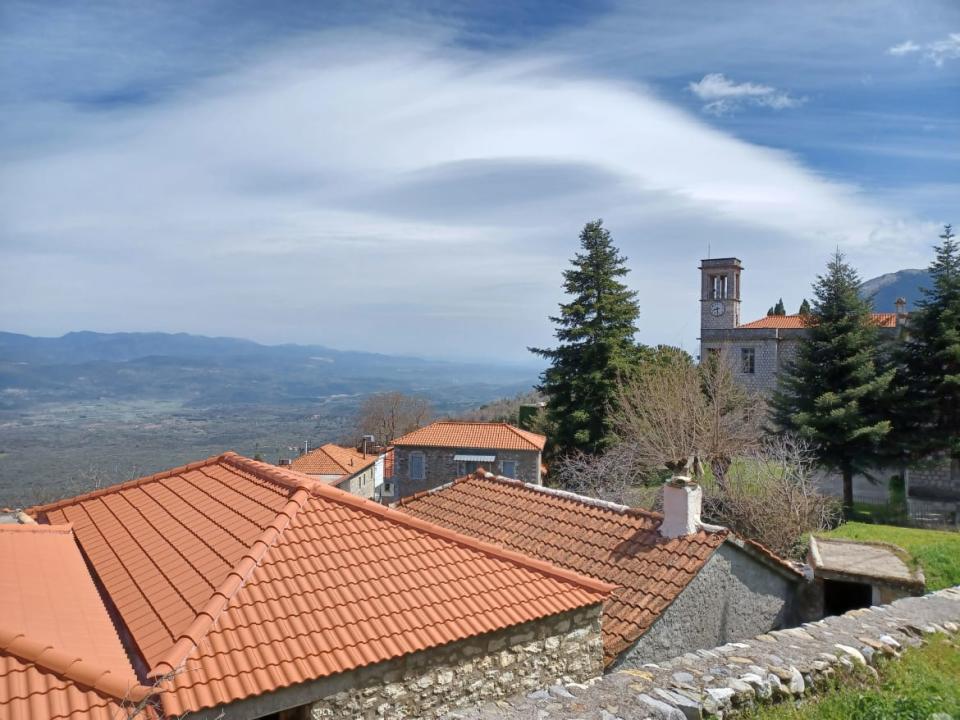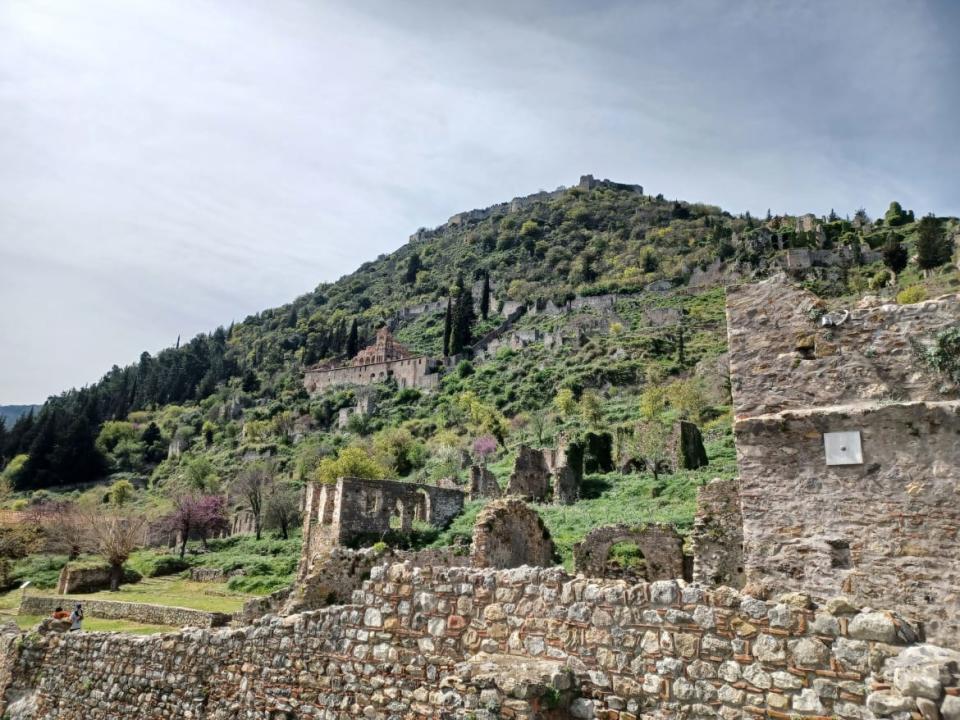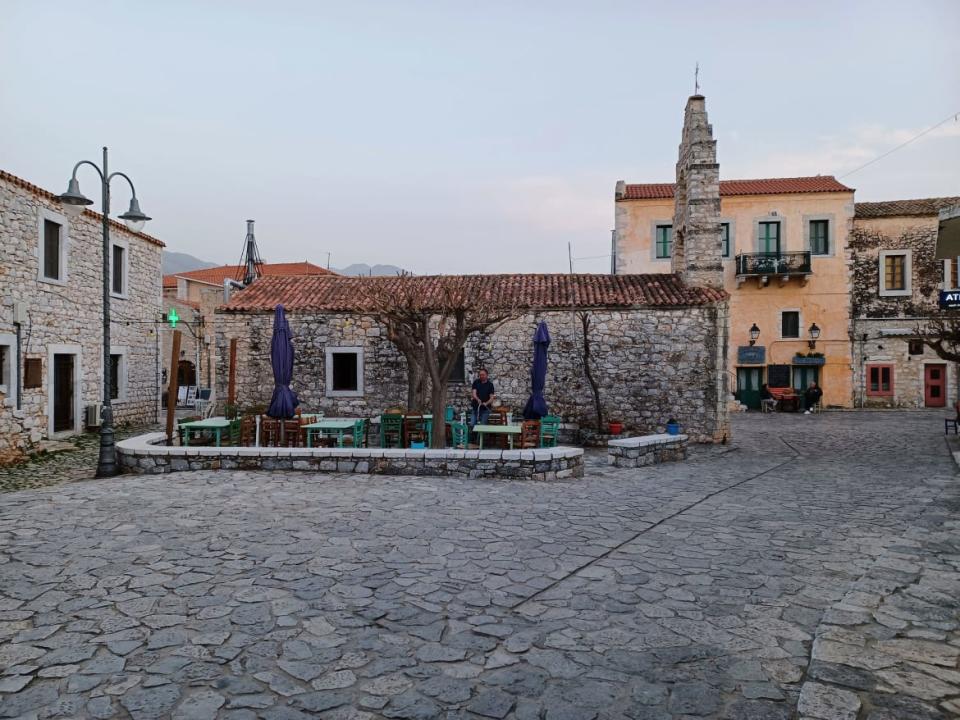This Ancient City Known for Blood Sport Is Still Around

This is the latest edition of our series on underrated destinations, It’s Still a Big World.
Few foreigners realize that Sparta still exists.
The ancient city-state, which walked the line between legend and history, is often assumed to have fallen off the map at some point in antiquity. In fact, Sparta—or at least Spartans—have continued to endure until the present day, inhabiting the wild, mountainous province of Laconia in the southern Peloponnese. Formerly an isolated backwater, the blasting-through of new highways in 2016 opened up the region like never before, turning this remote corner of Greece into a comfortable two-and-a-half hour drive from Athens.
Laconia is the historic hinterland of Sparta, from which we derive the word “laconic”—to speak concisely, as the Spartans were said to do. Its borders were established by King Menelaus in Mycenaean times and have changed little since. Laconia is large, but sparsely populated, hugged on either side by two vast, virtually impenetrable mountain ranges—the Taygetus and the Parnon—which meet in the north before diverging down towards the sea in an inverted V shape. Between them lies the Eurotas river valley, a fertile lay of flat land upon which sits the city of Sparta.

Eurotas valley and Sparta from Mystras
Winding mountain roads reveal the villages of Laconia, some long since conquered by isolation, desiccated down to a few old barns, collapsing houses and stoic churches. Others like Vamvakou, are the center of innovative, hi-tech projects to kickstart village life. We stop for lunch at Georgitsi, which is somewhere in the middle. It has a gorgeous position, like an amphitheater of houses built on the slopes of Taygetus, its grand architecture reminiscent of a time when villages, not cities, were the centers of life in the region.
The modern town of Sparta is not beautiful nor is it particularly ugly. It was largely re-established from scratch in the 19th century a few hundred meters south of the ancient city. It has a striking, grid-like pattern and wide, people-friendly pavements (a rarity in Greece) filled with orange and palm trees. It’s small and quiet and has a workaday charm as people go about their business. If you spend enough time here, you will a) be told how the majority of Greece’s oranges are grown in the orchards around Sparta and b) be offered a glass of the town’s ‘orange gold’ to try. Much of the produce is shipped to Athens, a trade relationship that has given Sparta a modicum of prosperity as an agricultural center. Tourism, however, remains minimal, with most foreign visitors being diaspora from the United States (notable Spartan-Americans include Pete Sampras and Telly Savalas).
Like most Greek towns, it succumbed to a construction boom after WW2 which produced some truly dire results, but there are still some pockets where old, new Sparta survives, particularly in the central square with its neoclassical town hall and the snowcapped mountains of Taygetus rising in the distance. It’s particularly evocative during the evening volta, where families, couples and singletons stroll up and down in a kind of rural ritual.

Georgitsi
Outside of its square, the city has a smattering of sites. The most notable is the city’s archaeological museum, housed in a beautiful neoclassical building. Inaugurated in 1875, it was the first Greek museum outside of Athens, a testament to the Spartaphilia of 19th-century romantics, and has a dusty, old world charm full of lovely statues and mosaics of Greek mythological themes.
Otherwise, there’s an annex of the Greek National Gallery in town, an olive oil museum and a dolmen-like site which is speculatively claimed to be the tomb of Spartan general Leonidas. A large statue of the man himself stands at the northern edge of town, which is the endpoint of the grueling Spartathlon. In 2020, Gerard Butler came here to say his famous line, in what must surely rank as one of the most excruciating examples of life imitating art.
From the statue, it’s a short walk to the archaeological site of ancient Sparta which, like many provincial archaeological sites in Greece, is unstaffed and de facto free to enter. Sparta famously had no defensive walls (‘Our men are the walls’ they were known to say) and were far less concerned with aesthetics than the Athenians. “Suppose the city of Sparta to be deserted, and nothing left but the temples and the ground-plan,” pondered Thucydides, “Distant ages would be unwilling to believe that the power of the Spartans was at all equal to their fame.” Still, it’s an evocative place, overgrown with olive trees and full of lounging cats. The standout sight is the amphitheater, still being excavated, which could hold 17,000 spectators (more than the current population of Sparta). From the rim of the amphitheater you can view ancient Sparta, modern Sparta and the snowy Taygetus mountains—where Spartan infants considered too feeble were discarded shortly after birth— in one breathtaking vista.
The golden age of Sparta ended in 371 B.C., when the city was sacked by soldiers from the rival city-state of Thebes, leading many Spartans to flee to the Mani Peninsula (more on that later). Those that remained endured Roman, Visigoth, Byzantine, and Frankish occupations. In 1260, the Byzantines recaptured Laconia, expelled the Franks and moved the remaining Spartans to the nearby fortified city of Mystras, which became the site of an extraordinary Byzantine renaissance over the next two centuries. Gemistos Plethon, credited with reviving interest in ancient Greek philosophy, founded a school here, while some of the most important artists and architects of the time descended upon the city, adorning it with some of Byzantium’s greatest palaces, churches and frescoes. Mystras also served as a royal capital (the last emperor, Constantine XI, was crowned here) and was one of the last bastions of the Byzantine Empire, holding out against the Ottomans until 1460, seven years after the fall of Constantinople. Remarkably it continued to exist as a working city until 1953, when the final inhabitants abandoned it. In 1989, it was declared a UNESCO World Heritage Site.

Mystras
The road south from Sparta is dead straight, firing through orange groves and dull villages. Here, the Taygetus and Parnon mountains split off into two distinct peninsulas. The western peninsula is Mani, where the original Spartans fled to in the fourth century, preserving their distinct dialect, warlike society and pagan beliefs (the last villages weren’t Christianised until well into the 9th century.) Among Greeks, the Maniots have an almost mythic reputation as warriors. Even the area’s main town—Areopoli—is named after the Greek god of war. Instead of houses, they lived in towers to better defend themselves during their centuries-long blood feuds. They played an integral role in the Greek War of Independence but then assassinated the first Greek president out of spite. The Mani is so mountainous and remote that until the middle of the 20th century, it was more accessible by sea than by land.
From the port town of Gytheio, the road curves inland through a series of narrow canyons, covered in thick shrubs, with jagged mountains pummeling out of the earth and into a mist of low clouds. Bright purple and yellow heather covers the rugged landscape, lending an almost psychedelic quality to our journey. Lofty villages fall in and out of sight with each bend in the road, many of them seemingly carved from the rocks, with bell towers popping up like periscopes over the intact walls. The deeper we are pulled into the Mani, the more I feel the rest of the world drifting out of reach.

Areopoli
I arrive with relief at Areopoli, the unofficial “capital” of Mani. Areopoli is a one-horse town, though as one-horse towns go, it’s very pretty, with a gray, medieval feel which is unusual in Greece and more akin to a village in Tuscany. Here, people claim to be the real Spartans, untouched since the fourth century B.C., secluded in their tower houses while the rest of Laconia burned around them.
The next day, on the drive to Kalamata, whose airport is the easiest way to reach the region from abroad, we get a sense of the Mani coastline. The meandering cliffs, still draped in kaleidoscopic carpets of heather and wildflowers, plunge directly into the azure Mediterranean Sea. Unusual for Greece, the coastal villages—Oitylo, Limeni, Kardamyli—are well preserved and undeveloped, an evocative reminder of the Greece of days gone by. After centuries of stoic isolation, Mani is starting to be discovered as one of Greece’s most authentic and beautiful destinations, while the Spartans have traded in their warlike mentality for a warm hospitality. This is the Greek Deep South—poor, hot, conservative, but home to some of the most beautiful landscapes and friendliest people you’re likely to meet.
Get the Daily Beast's biggest scoops and scandals delivered right to your inbox. Sign up now.
Stay informed and gain unlimited access to the Daily Beast's unmatched reporting. Subscribe now.

